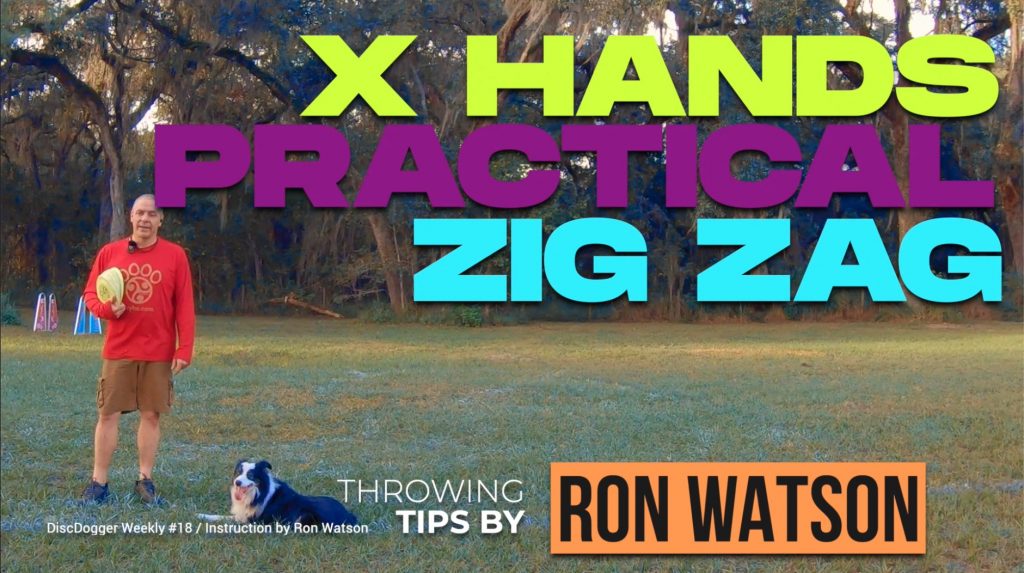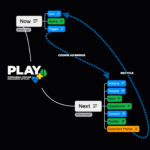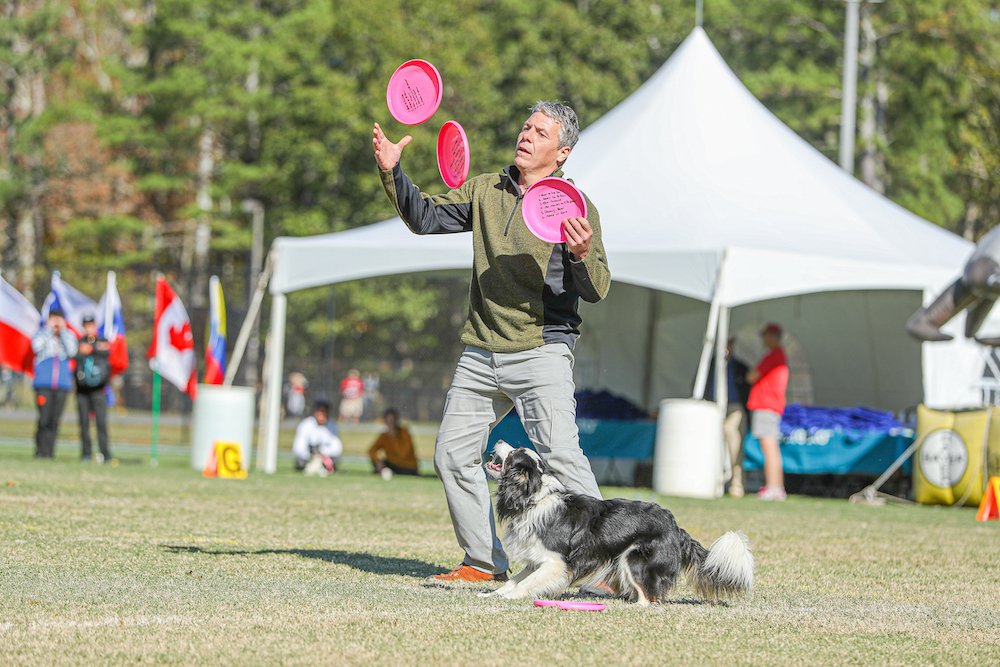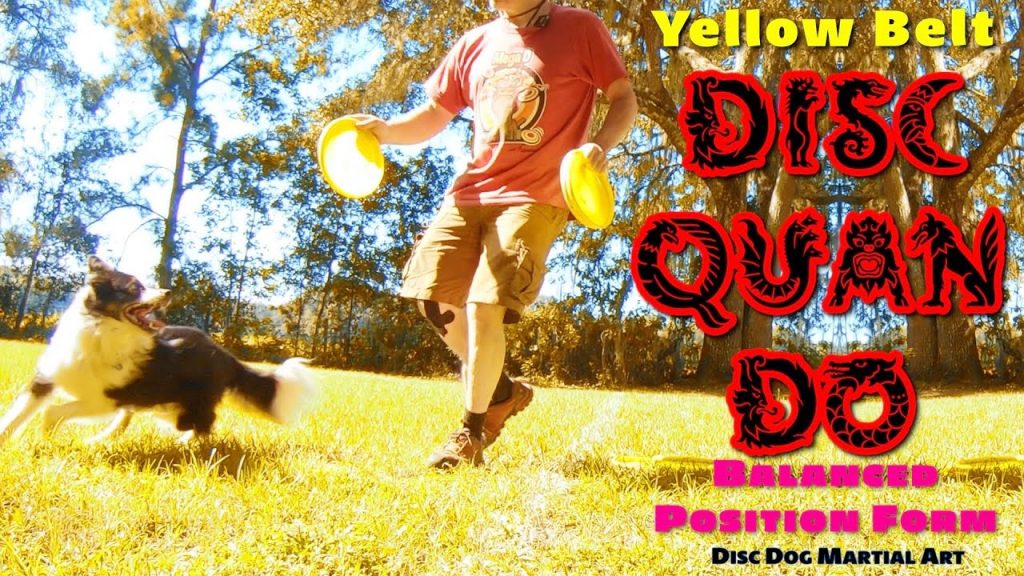
Disc Dog Throwing | From Form to Function
Last week’s DiscDogger Weekly featured a segment on the 8 and 12 Hands Forms, the Yellow and Green Belt throwing forms from Disc Quan Do. Each belt level has an X Hands throwing form. It starts with the White Belt 4 Hands Form, a standard group of 4 throws, and each belt level adds 4 additional throws up to the 32 Hands Form for Black Belts.
Structure of the X Hands Forms
Each X Hands Form should consist of four distinct throws, two that spin Spins and Twists are tricks where the dog spins 360 degrees in a clockwise or counter clockwise fashion. Spin is clockwise and Twist is counter clockwise so it is important to have a... More clock and two that spin counter. The two clockwise throws are thrown to the right and the two counter clock throws are made to the left. These throws alternate. One clock then one counter. This makes for a ready made Zig Zag
Spins and Twists are tricks where the dog spins 360 degrees in a clockwise or counter clockwise fashion. Spin is clockwise and Twist is counter clockwise so it is important to have a... More clock and two that spin counter. The two clockwise throws are thrown to the right and the two counter clock throws are made to the left. These throws alternate. One clock then one counter. This makes for a ready made Zig Zag A Zig Zag is a series of catches in smooth succession that forces the dog to move back and forth across the field. Usually performed at a distance of 8-20 yards, the Zig... More pattern and creates a sense of balance in your throwing.
A Zig Zag is a series of catches in smooth succession that forces the dog to move back and forth across the field. Usually performed at a distance of 8-20 yards, the Zig... More pattern and creates a sense of balance in your throwing.
Purpose of the X Hands Forms
In addition to the ready made Zig Zag, this balanced structure creates a framework for rapid learning and the cultivation of muscle memory of the actual throwing and the movements and actions between throws, like loading the discs and positioning your body.
The X Hands forms are more than Zig Zag training and more than throwing training. They are a formula for competence in creative disc throwing.
Shifting Focus
Shifting focus within Disc Quan Do forms is kind of the point. It is one of the big differences between a form and a drill. Forms are laid out, designed, and performed with multiple purposes in mind. Exploring these purposes teaches lessons that you didn’t know you needed to learn and delivers the skills and abilities required for mastery.
In most of the X Hands Form lessons done so far in DiscDogger Weekly we’ve been focused on learning throws, precision & accuracy, and the intangibles of throwing like learning about clock and counter spins, loading discs, and getting into position. Each of these deserves your focus, but the practical applications need focus too.
This session is focused on practically applying the 8 and 12 Hands Forms towards a Zig Zag. You can look at this as training, learning, or a proofing exercise simply by shifting your focus.
I don’t feel the need to test myself here, having not done a ton of work on these forms, but I’ve already learned the throws and have base level competence with them. So in the video above, I’m focused on using these forms for training purposes. I guess you could consider it a proofing exercise, as it is a video demonstration, but that was not my focus.
Freedom of Mind
The thing that I noticed most of all was that, despite the crazy throws in my 8 Hands Form and the counter-intuitive loading of discs with the upside down 12 Hands Form, the mechanics of the Zig Zag were really solid. There was no struggle, mental or physical with the throws or the preparation for the throws.
This freedom of mind made it really easy to handle Eppie and read my dog. This ease of handling the dog and free mental bandwidth made making the throws pretty easy. When the stuff between the throws is ironed out and happening automagically, success becomes much easier and much more likely.
Evaluating My Results
These 4 Zig Zags were the whole session. Now The Now Phase is an integral part of the Play Cycle in the Play+ training philosophy. It embodies the current, immediate interaction between the handler and the dog, anchoring them in the present... More these are not the greatest of Zig Zags, we didn’t leap every time, the throws were not perfect, and there is plenty of room for improvement.
The Now Phase is an integral part of the Play Cycle in the Play+ training philosophy. It embodies the current, immediate interaction between the handler and the dog, anchoring them in the present... More these are not the greatest of Zig Zags, we didn’t leap every time, the throws were not perfect, and there is plenty of room for improvement.
That said, I felt quite comfortable making the throws. Loading the discs and getting my body into position were fairly automatic, it was easy to read my dog, and making the throws happened as anticipated.
I’ll go ahead and call it a win.








Responses